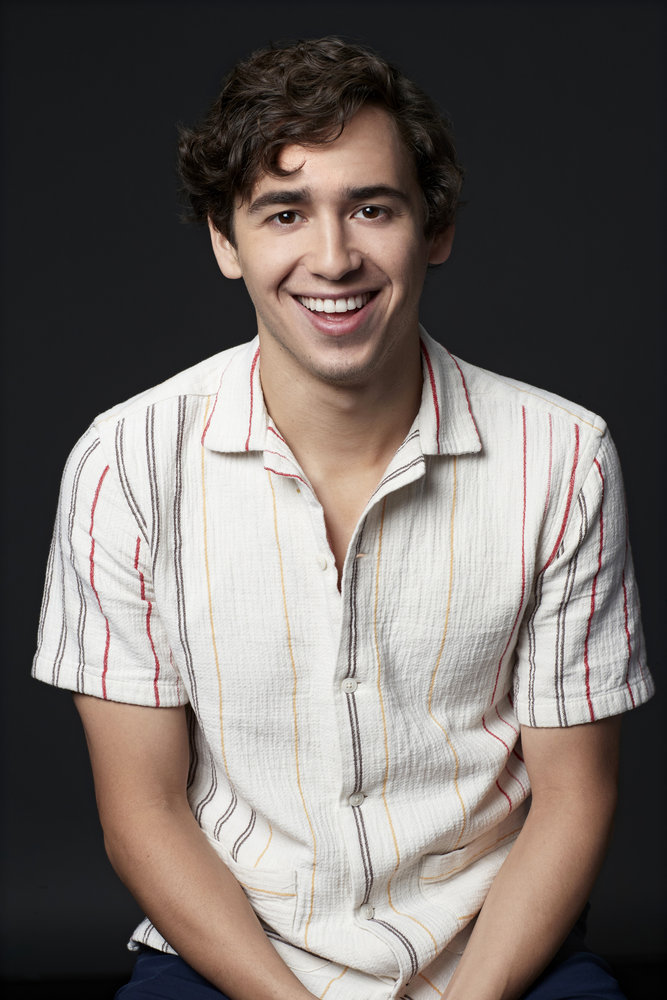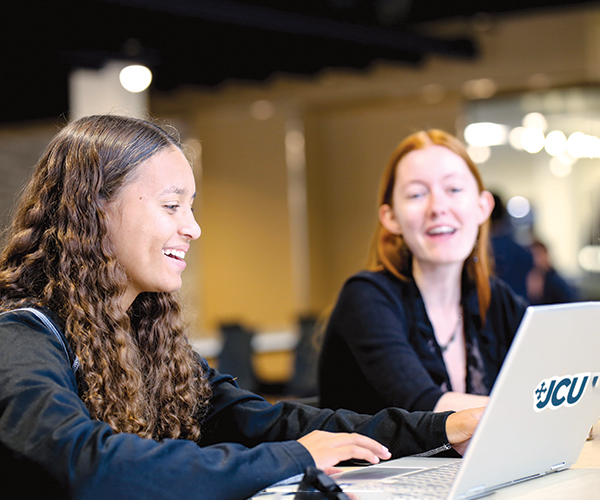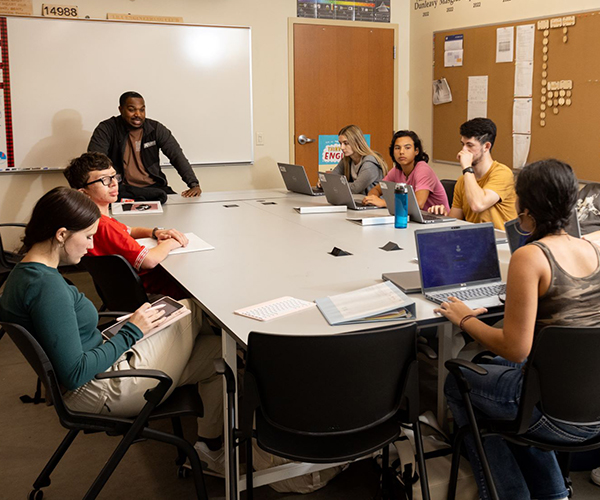What I Did Last Summer
by Kim Schneider | Jul. 27, 2005 | 4:00 AM
While most kids see summer as an opportunity to soak up the sun and relax, others have a very different "What I Did Last Summer" report to share come September. Whether studying DNA at Case Western Reserve University, cooking up a gourmet meal at Hathaway Brown or publishing a newsletter at Kent State University, these camps prove the drive to learn is strong even when school's out.
The Future of Medicine
A group of 10th- and 11th-graders from James Rhodes, Glenville and John F. Kennedy high schools all meet on the third floor of the Biomedical Research Building at Case Western Reserve University. Instead of hanging out beside the pool, they're spending this summer morning sharing what they've discovered under the microscope during their voluntary laboratory work.
The students are part of the Scientific Enrichment and Opportunity Program led by Dr. Nathan A. Berger, a professor of experimental medicine and director of the Center for Science, Health and Society at Case. In its second year, the program is designed to help high school students who show an interest in science by allowing them to gain experience in a true laboratory setting. "This is the best possible thing they can do this summer," Berger says. "Our goal is to increase the biomedical workforce and this is one of the ways we are trying to get people into the pipeline and help improve the health of Cleveland."
The eight-week program is a full-time job for these students (each receives a $500 stipend for their service), but there is plenty of exciting work. As they go around the room reporting what they're studying in their respective labs, these typical high school students, with their cell phones and trendy clothes, turn serious. They talk about working on diseases such as diabetes, malaria, Alzheimer's and cancer. They talk about DNA, cloning, genes and antibodies.
The 20 students went through an application process, which required a 2.5 grade-point average or better and recommendations from school counselors and their science teachers. Whether global health, genetics, pathology or pharmacology, each area gives students a taste of what they can accomplish with a career in medicine. Not everyone has to become doctors, Berger notes. The Cleveland area needs lawyers, nurses and clerical workers as well. This is a chance for students not only to learn about making a difference in the field of medicine, but also how to network and make future contacts within the lab.
Every Tuesday and Thursday at noon, the students come to the Biomedical Research Building from their lab work to sit, eat lunch, talk about their research and listen to a speaker. For these minority students, being able to connect with other minority students and faculty is a wonderful opportunity, Berger says.
For students who are unsure of their career paths, having the chance to see how they can make a difference may be the deciding factor. "I was overwhelmed with a lot of information at first," says Krystle Rivera, 17, of James Rhodes High School. "As you go on you understand things more."
Krystle, who is working with Dr. Monica Montano on breast cancer research to find out how estrogen is related to the disease, says she is a step closer to finding her career path. "I'm actually thinking about pursuing something in this field," she says. "It would help so many people."
Aspiring Leaders
Why on earth do you want to spend your summer in school? It's a question every girl is asked before they commit three summers to the ASPIRE program at Hathaway Brown. ASPIRE partners with 19 Cleveland-area public schools to find girls who will fill the program's 36 open slots. "We want to share what is great about Hathaway Brown with a broader group of girls," director Cammy Howe Dubie says.
These girls pledge their dedication to the program, starting with an application process during the fifth grade and graduate from ASPIRE during the summer before they enter eighth grade. "I'm so impressed with how many girls want to do this," Dubie says. "Our hope is that they all go to college."
The five-week, tuition-free program is funded primarily by 12 foundations. ASPIRE recruits undergraduate college students from all over the country to teach the program. "They are very young and energetic teachers," Dubie says.
While one focus of the program is to work on their academic studies with classes in reading, writing, math, science and social studies, there are plenty of other activities. Each girl chooses two workshops every summer. These classes range from radio journalism to cooking.
"I don't know why they took home economics out of schools," Dubie says of the most popular class. "They really love to cook."
Every Friday, the group takes field trips to places such as the Cleveland Museum of Natural History and Cleveland Botanical Garden. To celebrate their graduation, the group of eighth-graders takes a trip to Dearborn, Mich. "For most girls, this is their first time away from home," Dubie says. "And their first time out of the state."
This summer marks the program's fourth year. Thirty-three of the 36 girls who started the program three years ago graduated. "And out of that, 12 of them never missed one day," Dubie says. "Not one day out of three years."
Ashley Thomas, 13, is in her third year of the program and emphasizes that it is not like summer school. "It sounded like fun to learn things in the summer," she says. "The vibe is cool and the way they do things is fun."
She has even recommended ASPIRE to her cousin, who just started this year. "I would come home and talk about what I did and she would always say she wanted to join."
Ashley says this is a unique experience for girls like her. "We don't have the opportunity to do this kind of stuff in the Cleveland Public Schools." She talks about taking a camera apart and looking at how the different gears and pieces all work together and her workshops of dance and acting as examples.
"It's odd to do school during the summer," says Adelle Bailey, 13, also in her third year of ASPIRE. "But you make so many friends and learn a lot of new things."
Kid Krazy
Parents who attended Kent for Kids/TREK at Kent State University when they were younger have the unique opportunity to give their own children a chance to experience classes such as fencing, crazy chemistry and cartooning. The summer program has been around for 30 years and allows 450 kids each summer to take classes that not only educate them, but also are exciting as well.
"It's an alternate to the traditional day camps," says Linda Darling, program coordinator at the College of Continuing Studies at Kent State University. "There are a variety of classes to choose from."
Take a look at the list of classes and you'll see she isn't kidding. For children who just finished kindergarten all the way through eighth grade, there is something for everyone.
Of course, there are sports such as baseball and basketball, but there are plenty of educational classes disguised as fun. Cinema Scene is all about watching movies and critiquing the films, but they also discuss how each movie reflects their lives. The Kent for Kids Chronicle class is responsible for making the camp newsletter, from writing stories to shooting photos and creating layouts. Incredible Edibles lets kids create snacks by mixing ingredients, but also teaches them measurements. The best part is that they get to eat their creations.
"All the classes are age-appropriate," Darling says of keeping age groups together. Four classes are offered each day for each age group during the five-week sessions that run June through August. There is a fee required for each class (starting at $50 per class). "It is especially convenient for local people or people who work on campus," Darling says.
The Kent for Kids/TREK staff consists of high school students who volunteer, former campers who return to help, teachers who work during their summer break and Kent State students. "It is kind of like a family," Darling says of the variety of people involved in the program.
Trending
-
1
-
2
-
3
-
4
-
5










